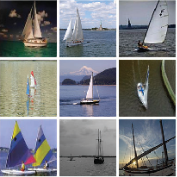We present unexpected findings from a large-scale benchmark study evaluating Conditional Average Treatment Effect (CATE) estimation algorithms, i.e., CATE models. By running 16 modern CATE models on 12 datasets and 43,200 sampled variants generated through diverse observational sampling strategies, we find that: (a) 62\% of CATE estimates have a higher Mean Squared Error (MSE) than a trivial zero-effect predictor, rendering them ineffective; (b) in datasets with at least one useful CATE estimate, 80\% still have higher MSE than a constant-effect model; and (c) Orthogonality-based models outperform other models only 30\% of the time, despite widespread optimism about their performance. These findings highlight significant challenges in current CATE models and underscore the need for broader evaluation and methodological improvements. Our findings stem from a novel application of \textit{observational sampling}, originally developed to evaluate Average Treatment Effect (ATE) estimates from observational methods with experiment data. To adapt observational sampling for CATE evaluation, we introduce a statistical parameter, $Q$, equal to MSE minus a constant and preserves the ranking of models by their MSE. We then derive a family of sample statistics, collectively called $\hat{Q}$, that can be computed from real-world data. When used in observational sampling, $\hat{Q}$ is an unbiased estimator of $Q$ and asymptotically selects the model with the smallest MSE. To ensure the benchmark reflects real-world heterogeneity, we handpick datasets where outcomes come from field rather than simulation. By integrating observational sampling, new statistics, and real-world datasets, the benchmark provides new insights into CATE model performance and reveals gaps in capturing real-world heterogeneity, emphasizing the need for more robust benchmarks.
翻译:暂无翻译




